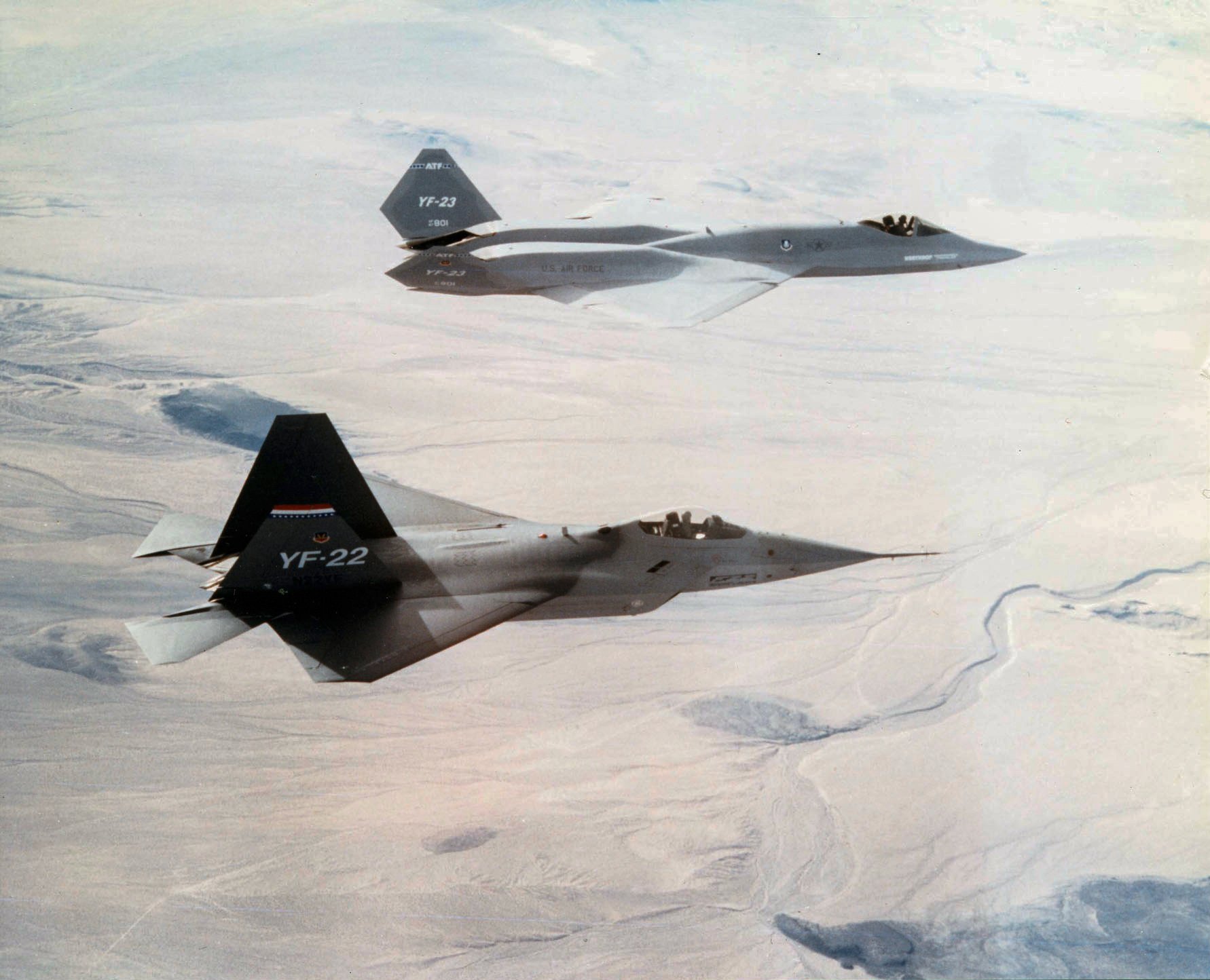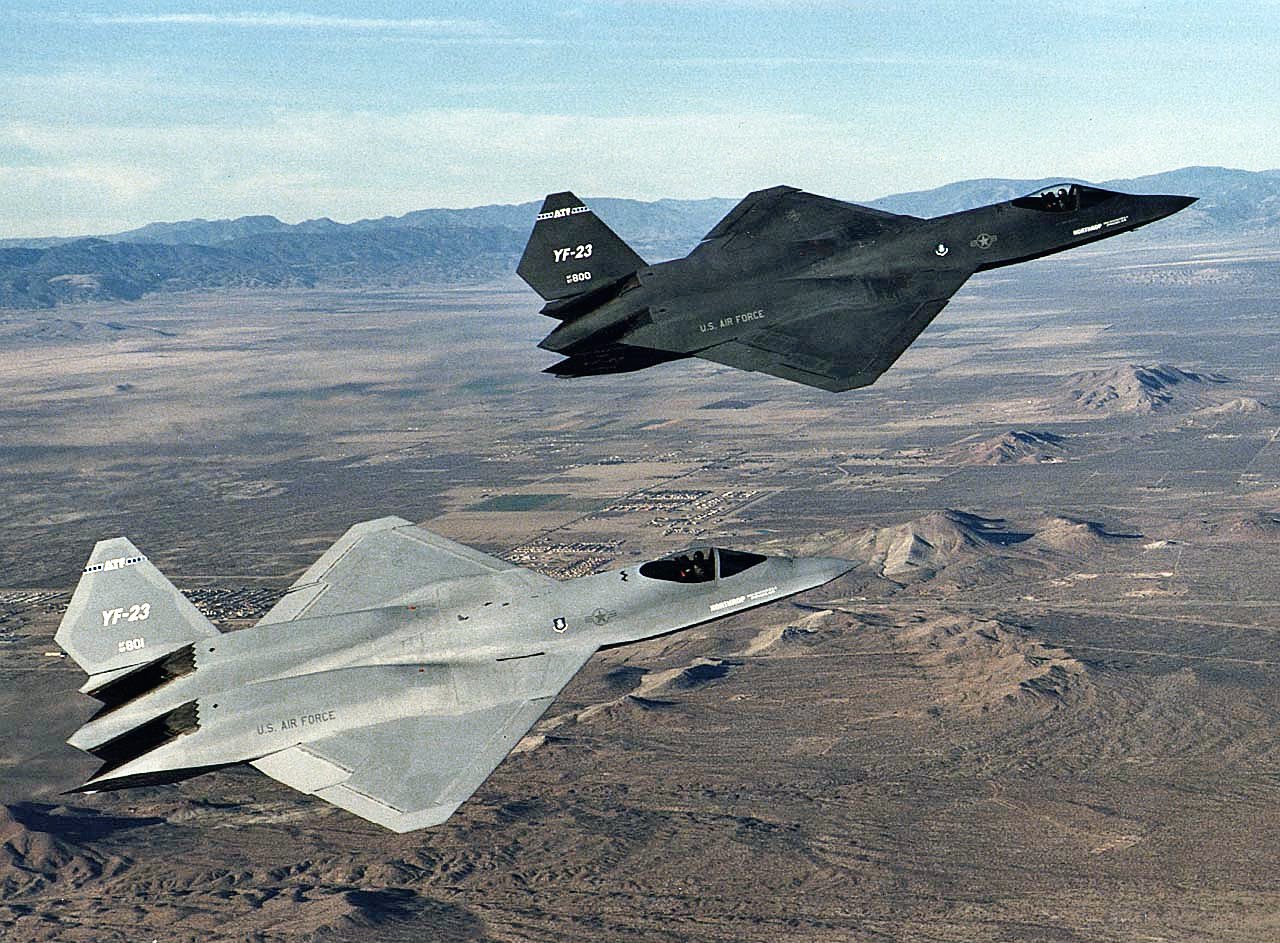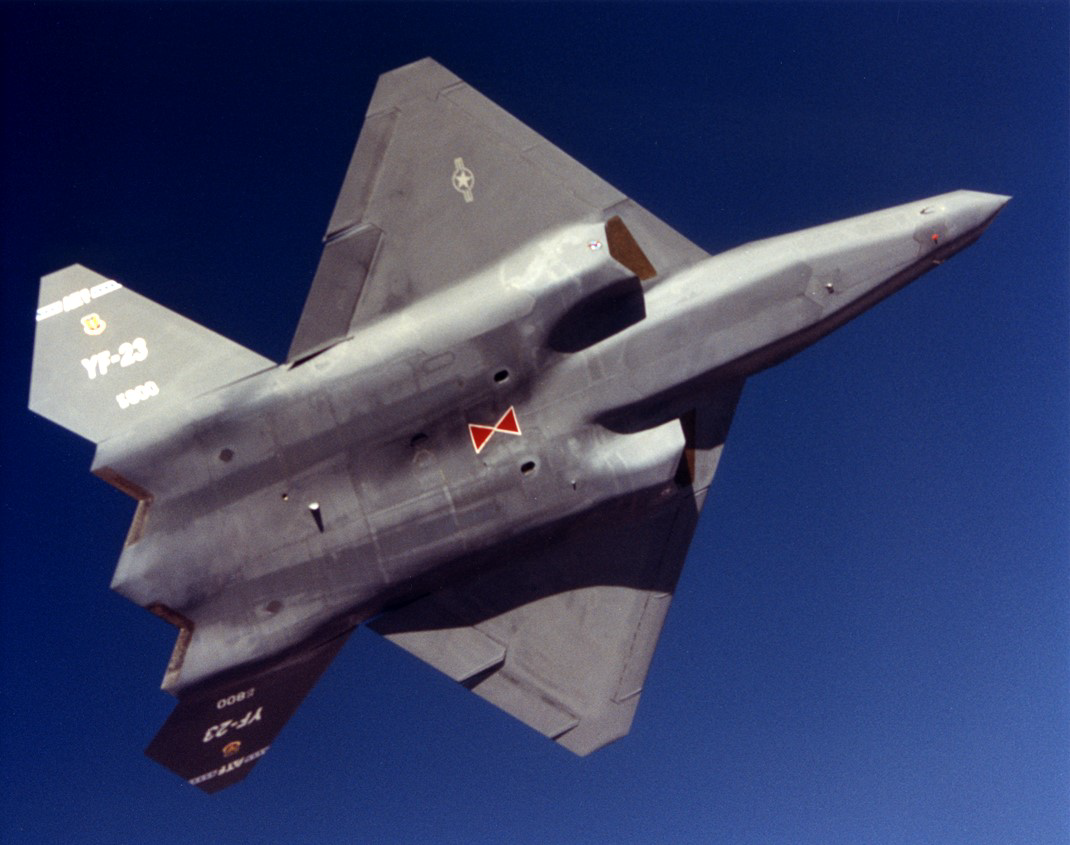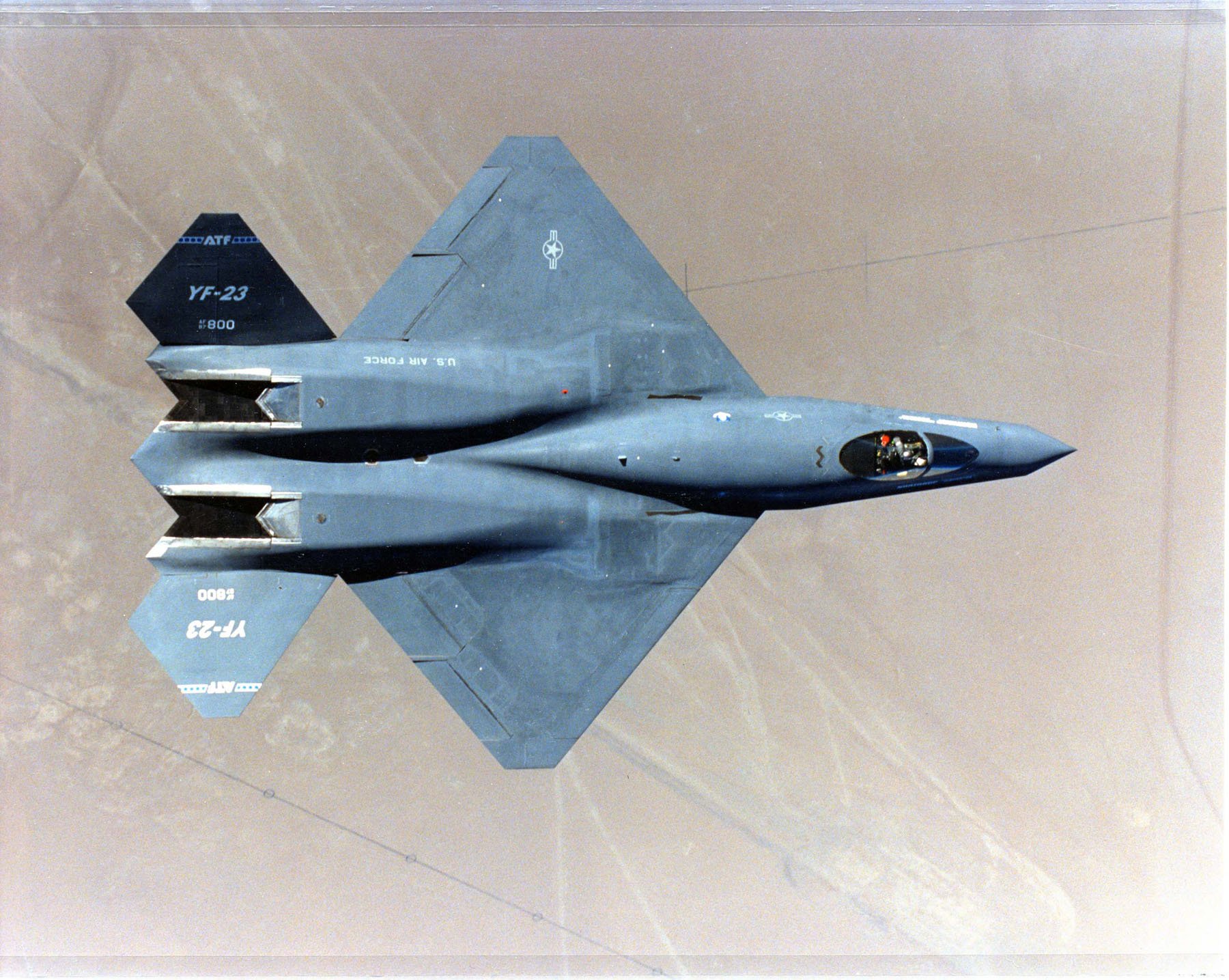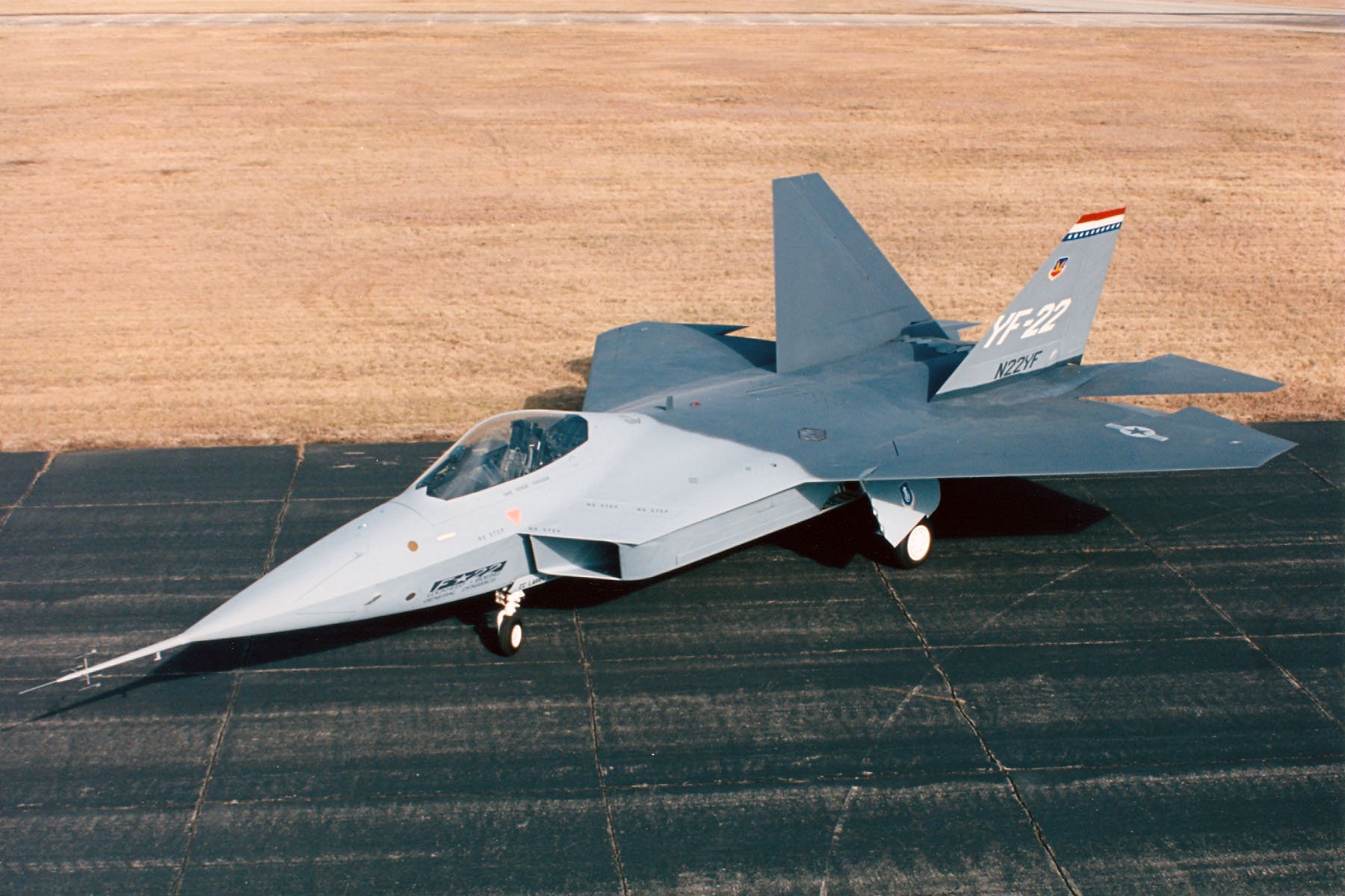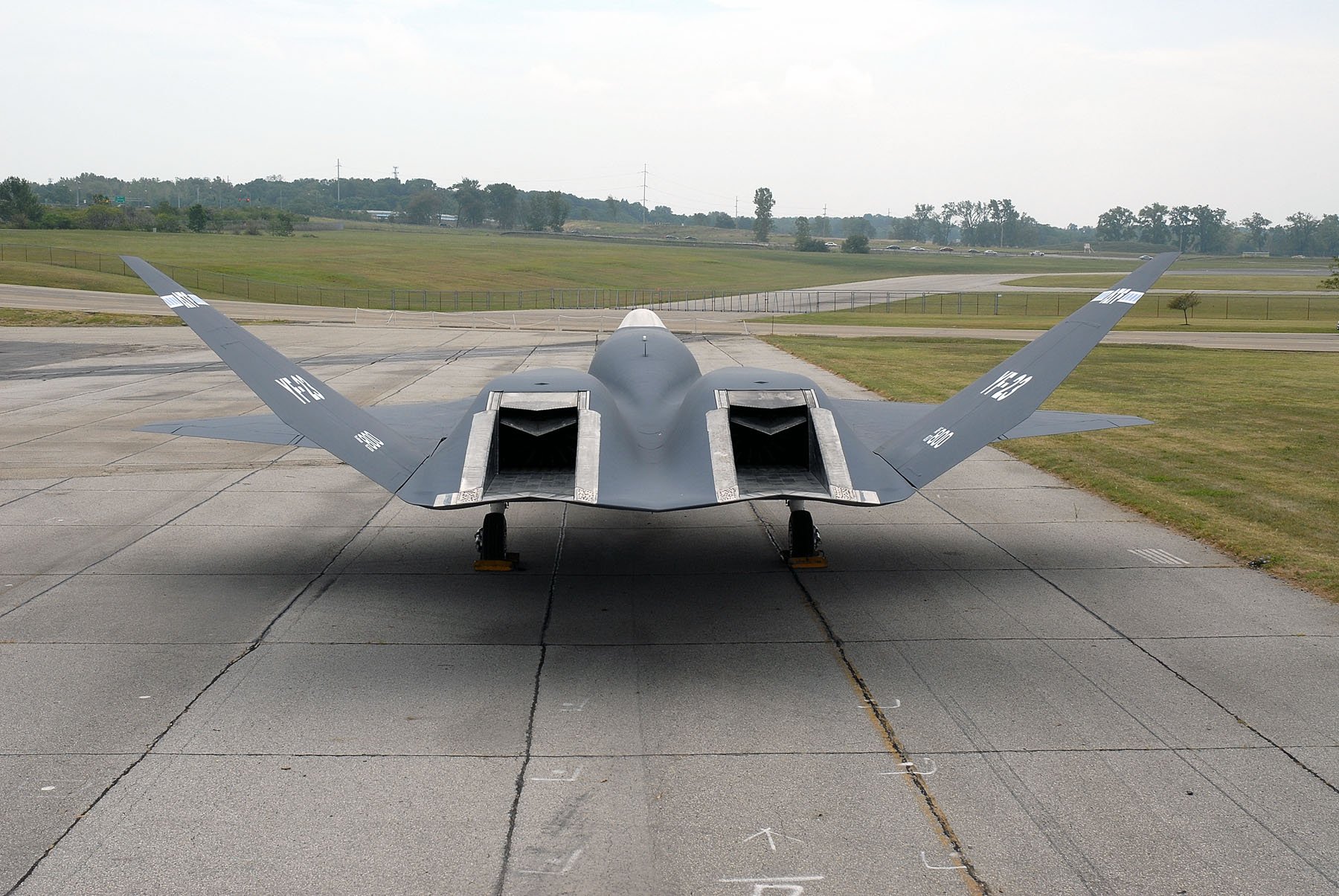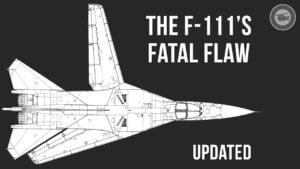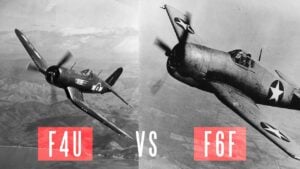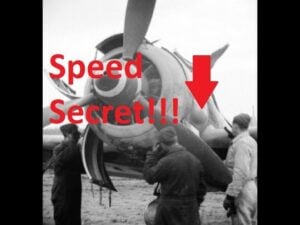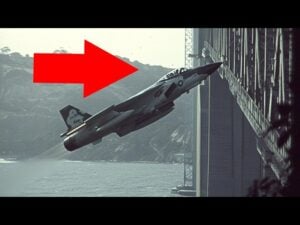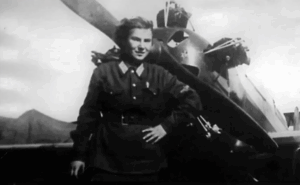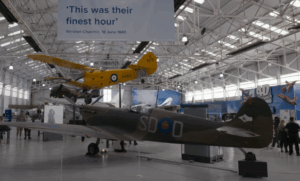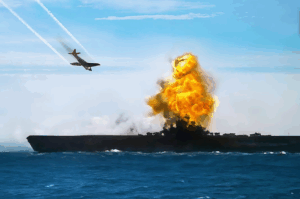Was The YF-23 Superior to the F-22?
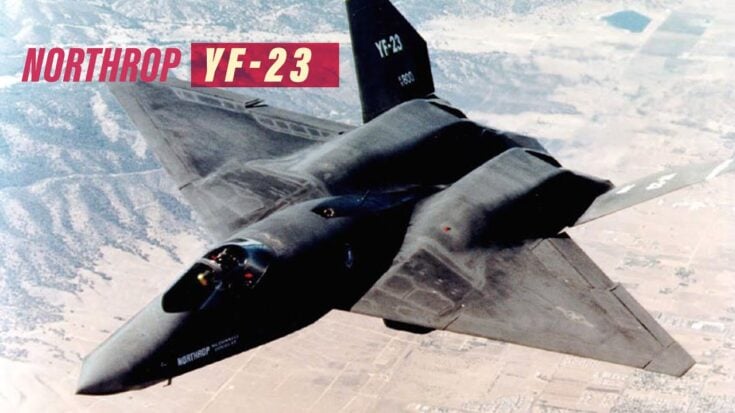
YouTube / Australian Military Aviation History
When people think of the world’s most advanced stealth fighter, the F-22 Raptor is the name that comes to mind. But in the early 1990s, another remarkable aircraft was in the running to become America’s next air superiority fighter: the Northrop YF-23.
The Birth of a Stealth Contender
In response to a 1981 U.S. Air Force request for a new stealthy, supersonic fighter, Northrop and Lockheed emerged as the two finalists. The Advanced Tactical Fighter (ATF) program would pit Northrop’s YF-23 against Lockheed’s YF-22, with the winner set to dominate 21st-century air combat.
Northrop, partnered with McDonnell Douglas, took a radical approach. The YF-23 featured a futuristic design with diamond-shaped wings, a V-tail, and innovative engine nozzles that minimized infrared and radar signatures. It emphasized stealth and high-speed performance without using thrust-vectoring, a key feature of the competing YF-22.
Performance and Innovation
Two YF-23 prototypes were built: “Gray Ghost” (PAV-1) and “Spider” (PAV-2). Each flew with different engines to test capabilities. The aircraft could supercruise at Mach 1.6 and possibly reach Mach 2.6 with afterburners—faster than the F-22. Its operational range was longer too, potentially over 4,800 km.
Test pilot Paul Metz, one of the few to fly both aircraft, noted the YF-23’s high angle-of-attack performance and stealth as stand-out qualities. He even suggested the YF-23 may have matched or surpassed the F-22 in key areas.
However, it lacked thrust-vectoring and never showcased a functioning weapons bay—a possible misstep in a competition designed to choose the Air Force’s next front-line fighter.
Politics, Perception, and the Final Verdict
While Northrop engineers presented an elegant and highly capable aircraft, Lockheed focused heavily on showmanship and clear communication to decision-makers. The YF-23’s more radical, less conventional design may have appeared riskier, especially given that the F-22 used familiar, proven technologies.
On April 23, 1991, the YF-22 was declared the winner. The YF-23 prototypes were sent to museums, and the world never got to see the production F-23 or the proposed naval NATF-23 variant. Yet the legend of the YF-23 lives on. Aviation enthusiasts still debate whether America passed on the better plane.
Legacy of a Phantom Fighter
Though the YF-23 never saw combat, its story is far from over. The aircraft remains a testament to bold engineering and innovative thinking.
And as details remain classified, the conversation around what could have been—and whether the better jet was left behind—continues to captivate generations of aviation fans.













